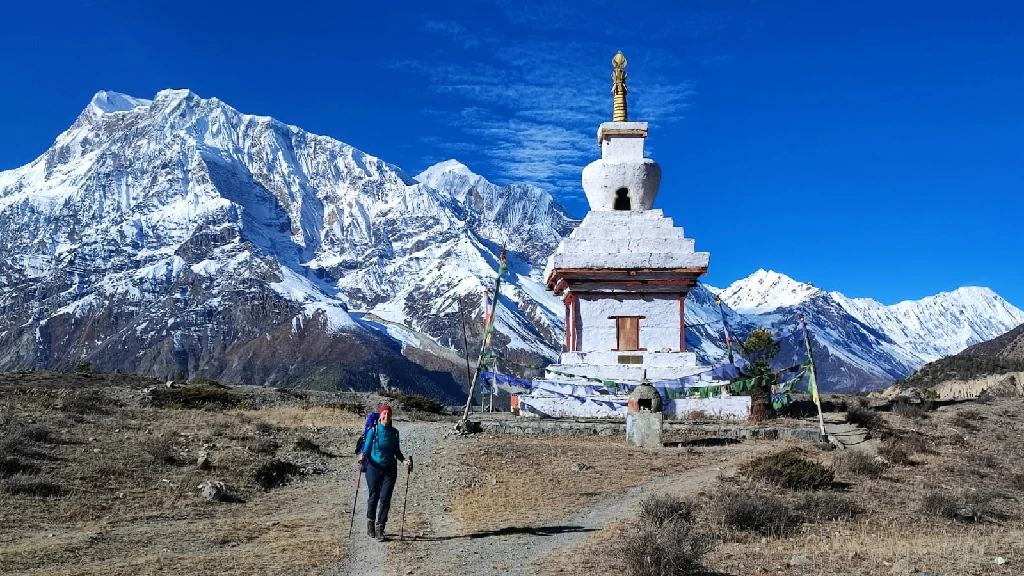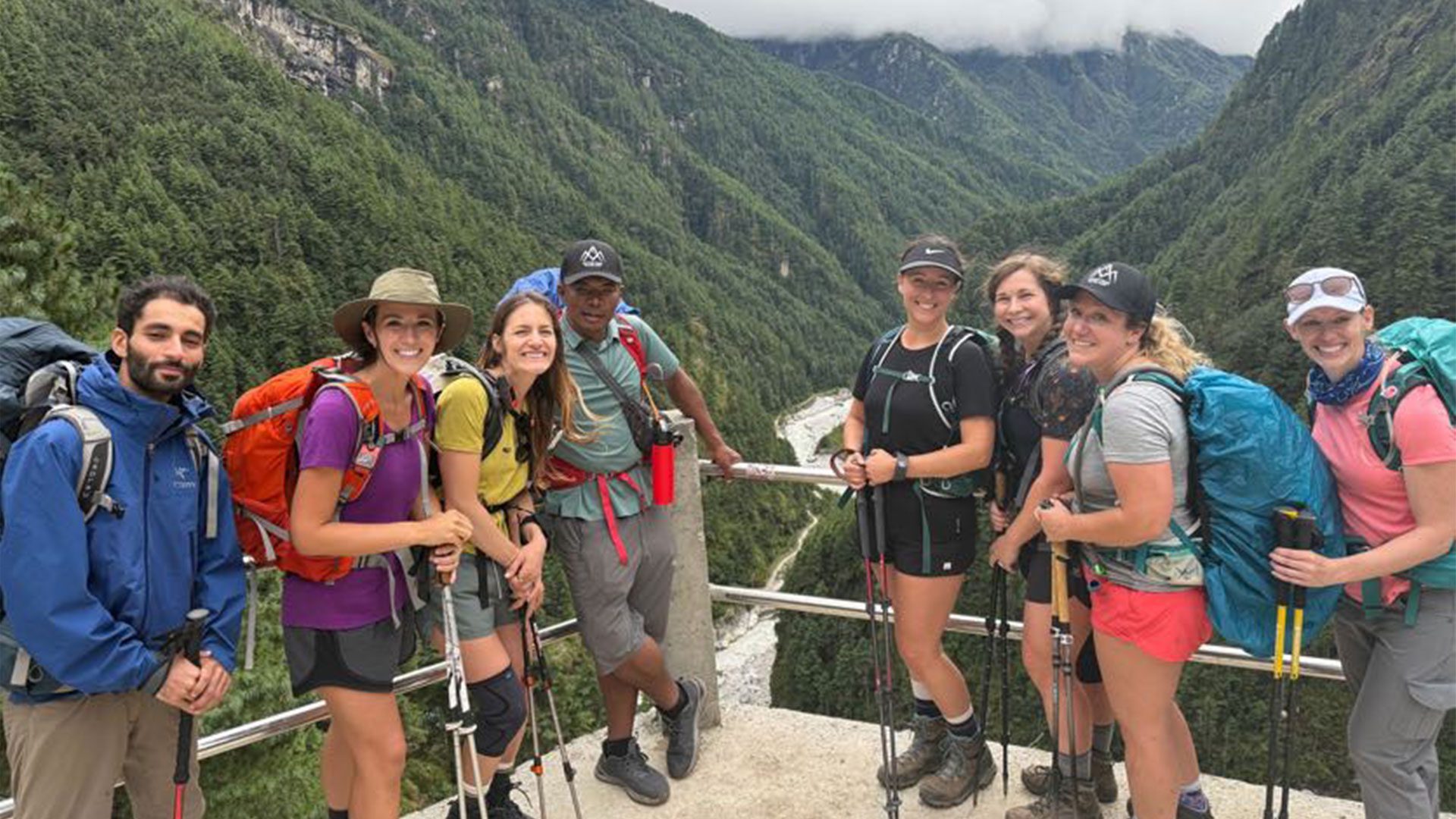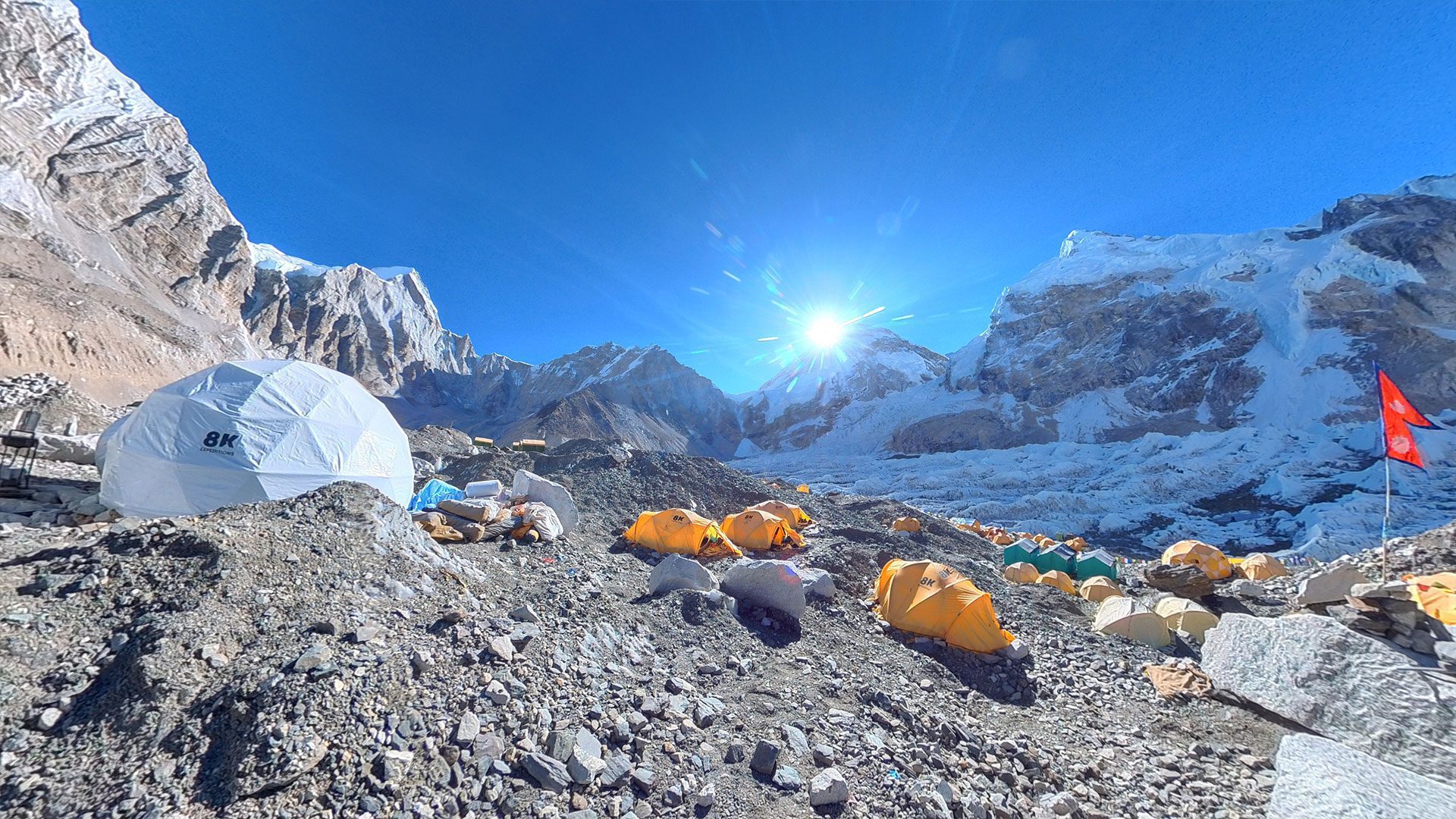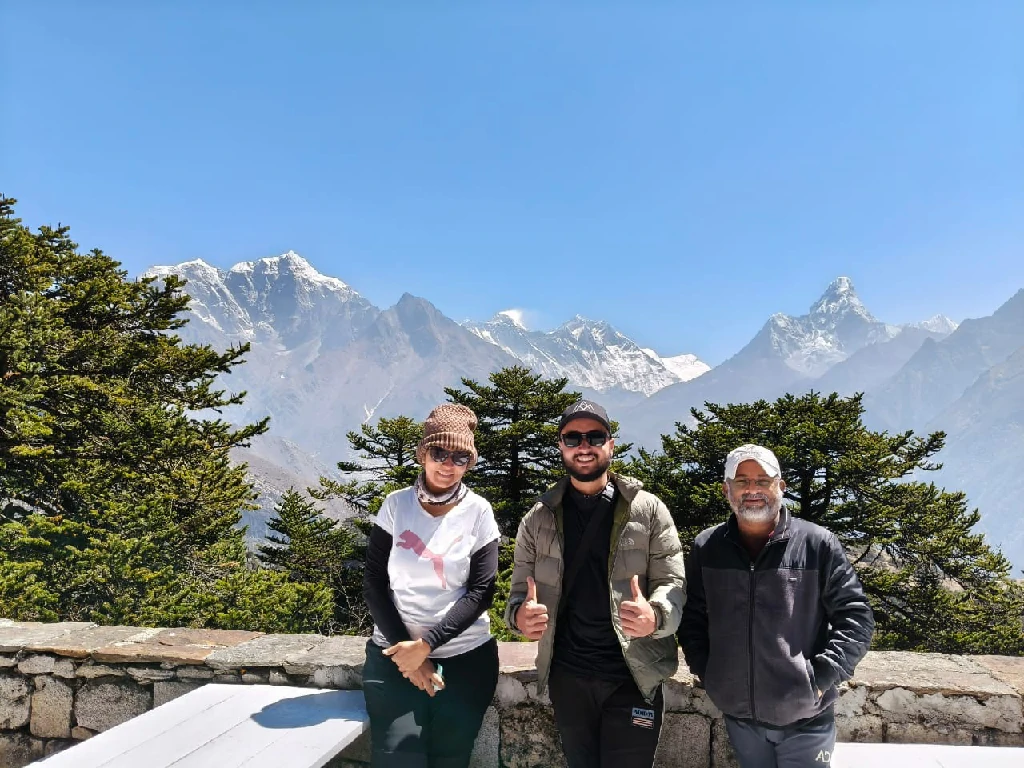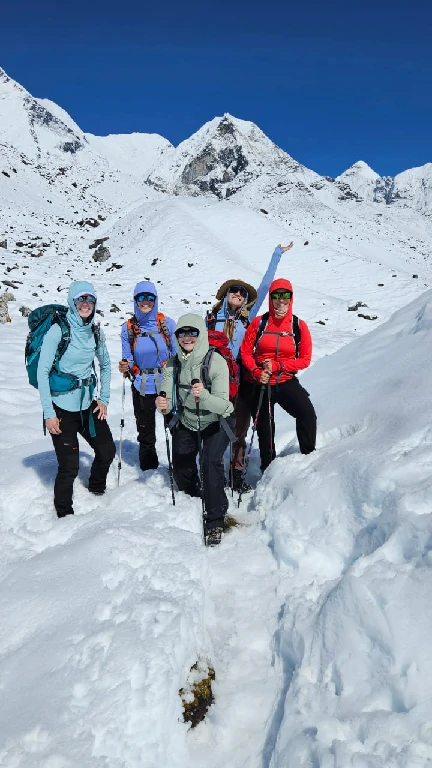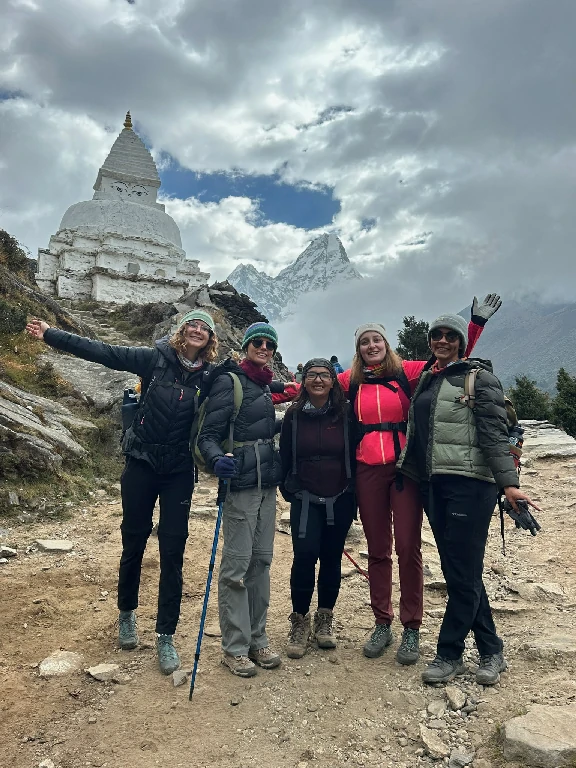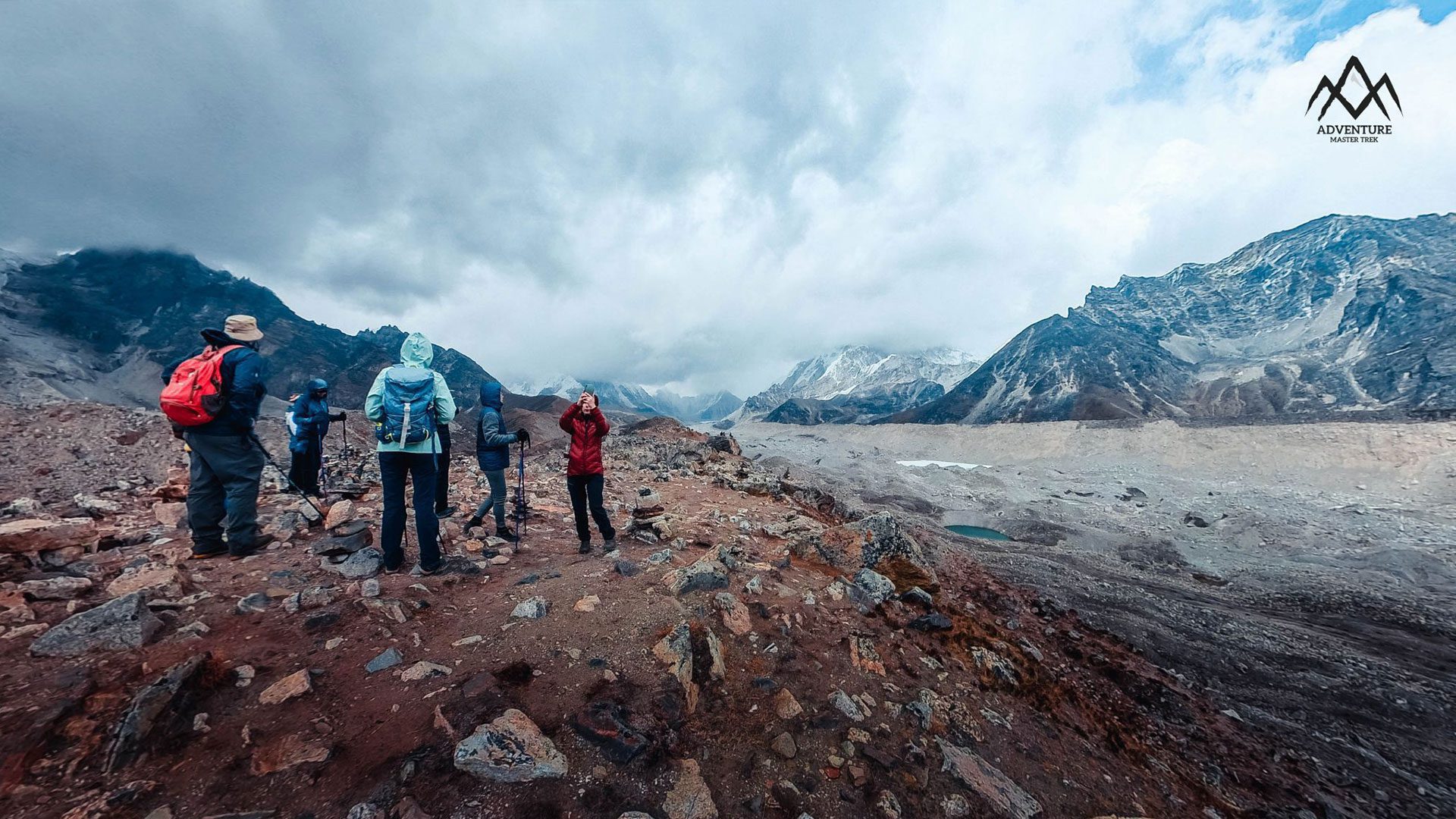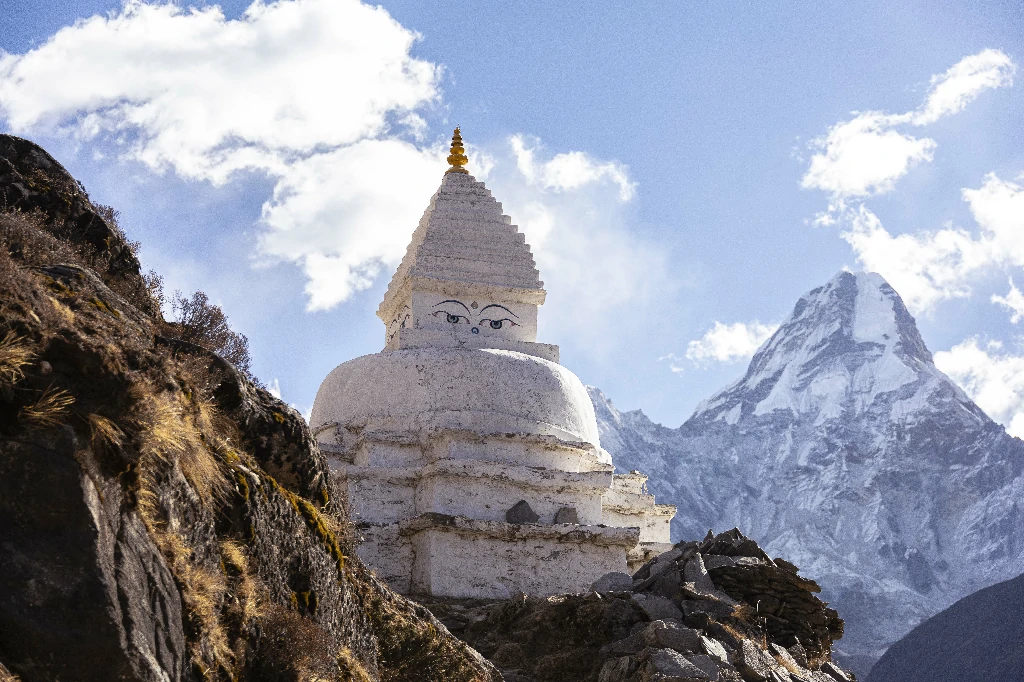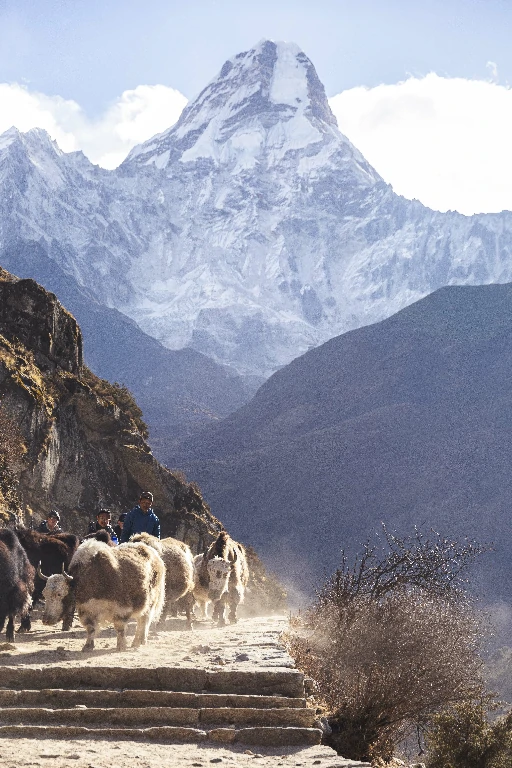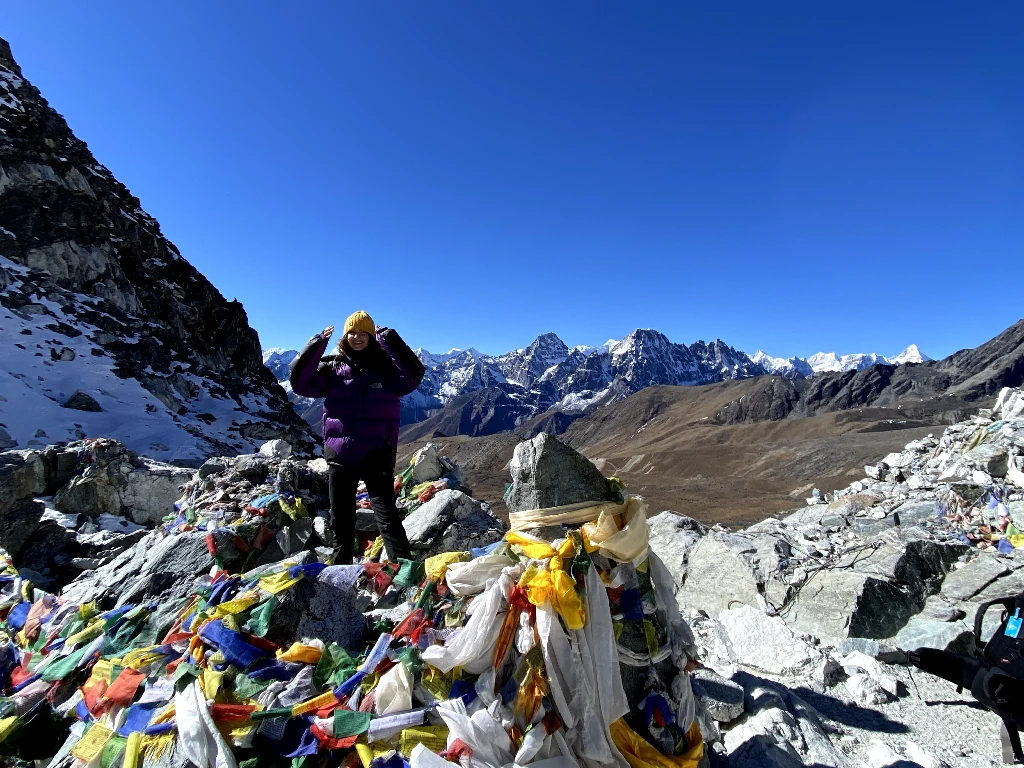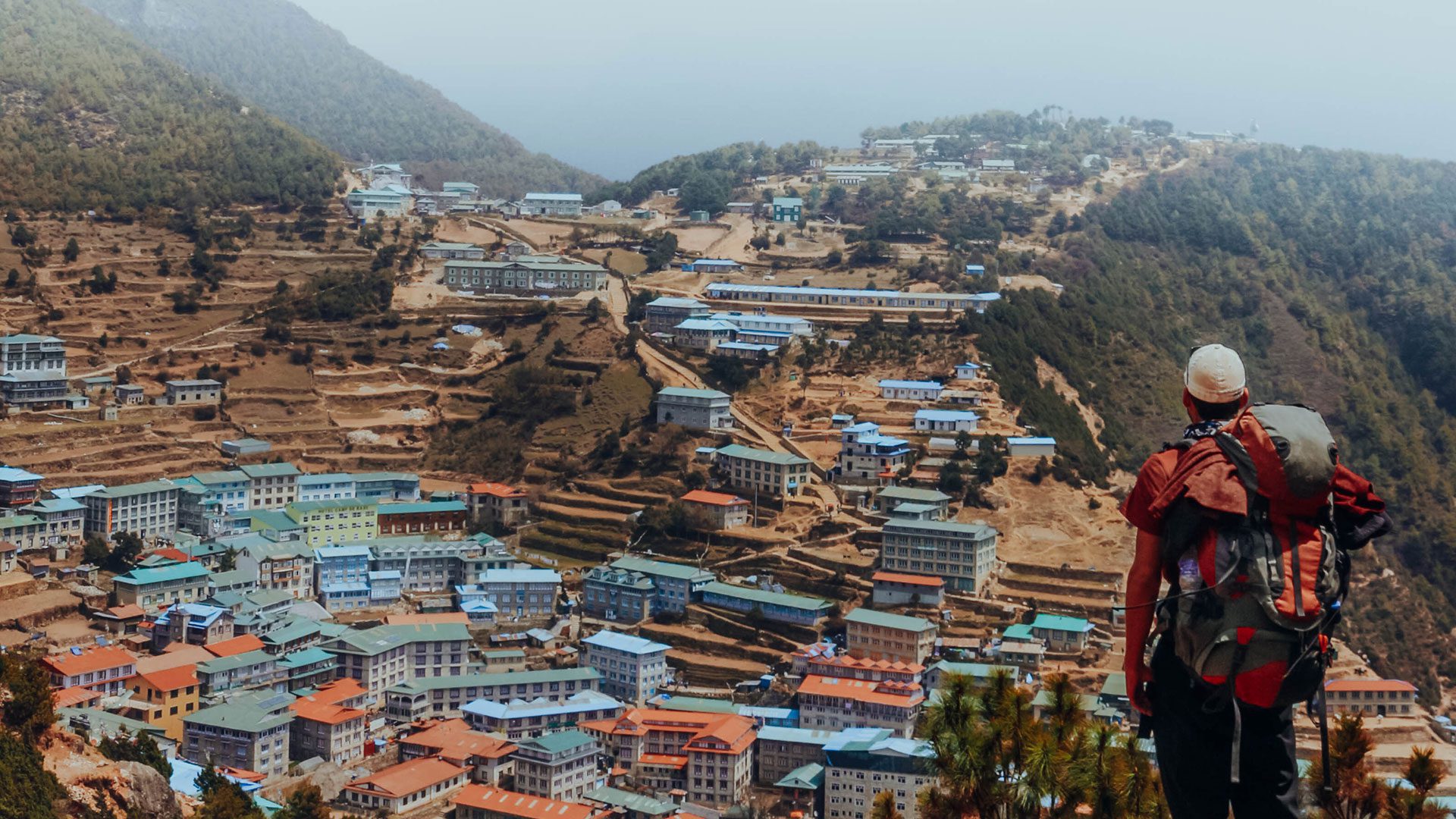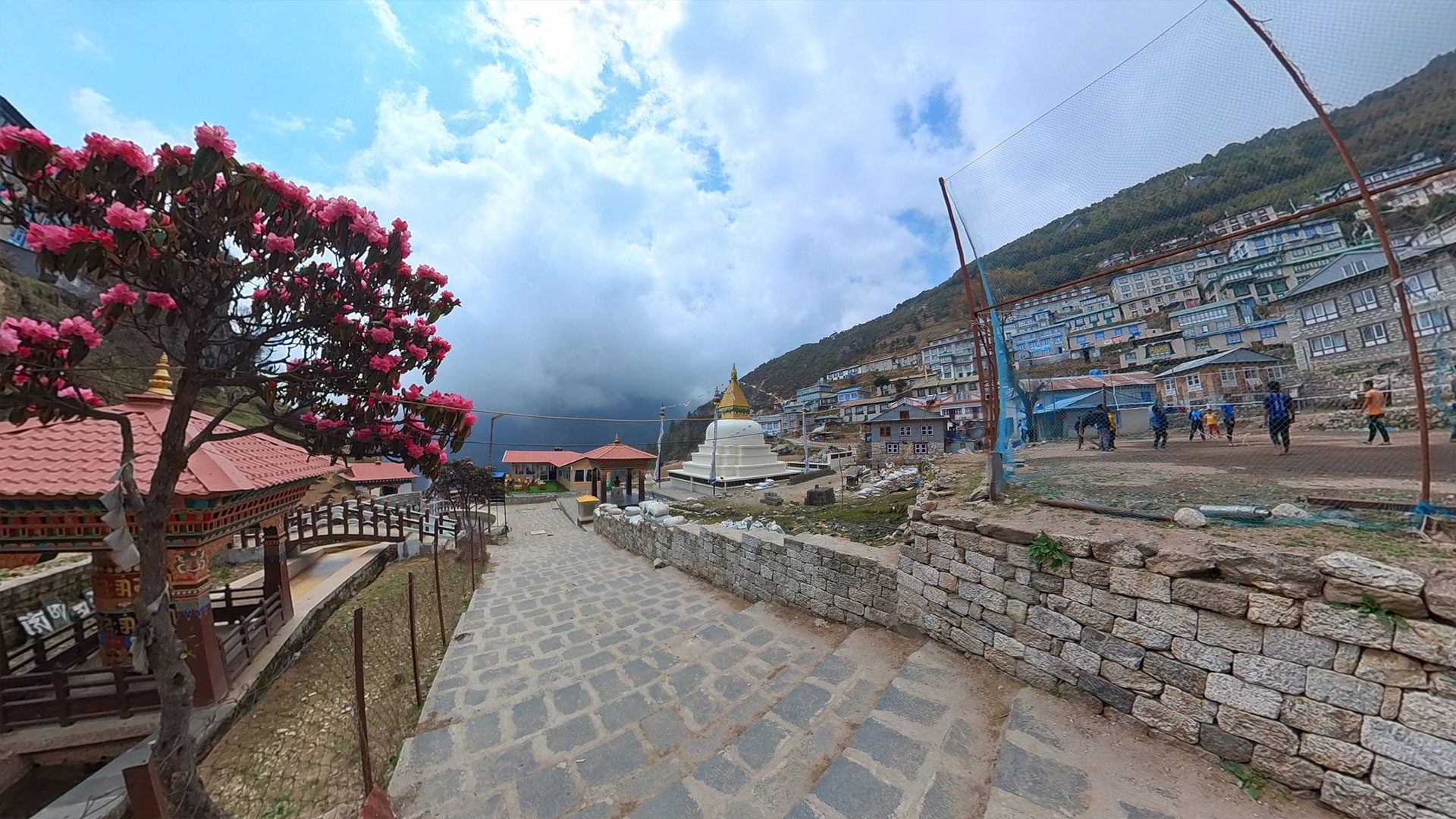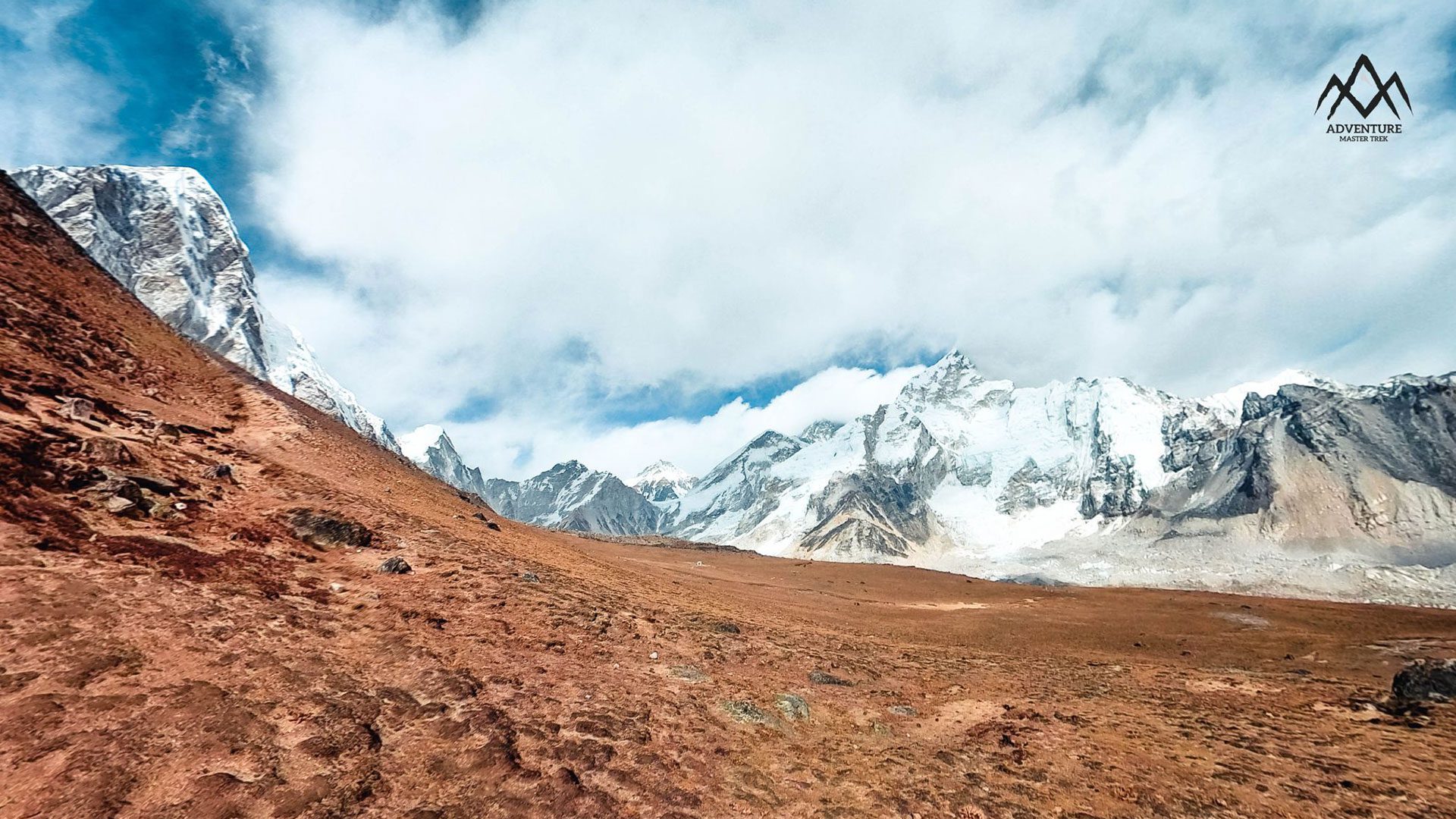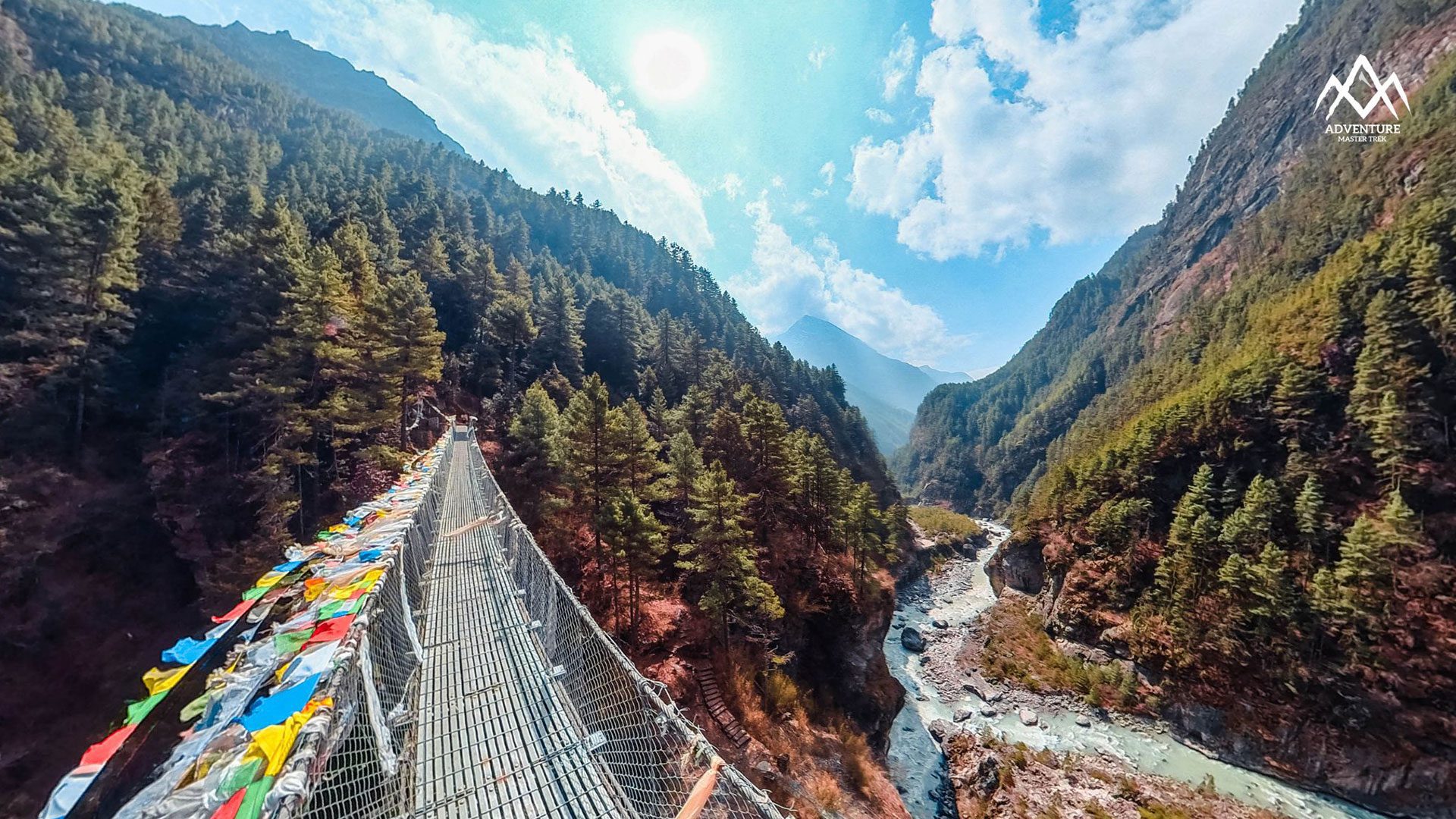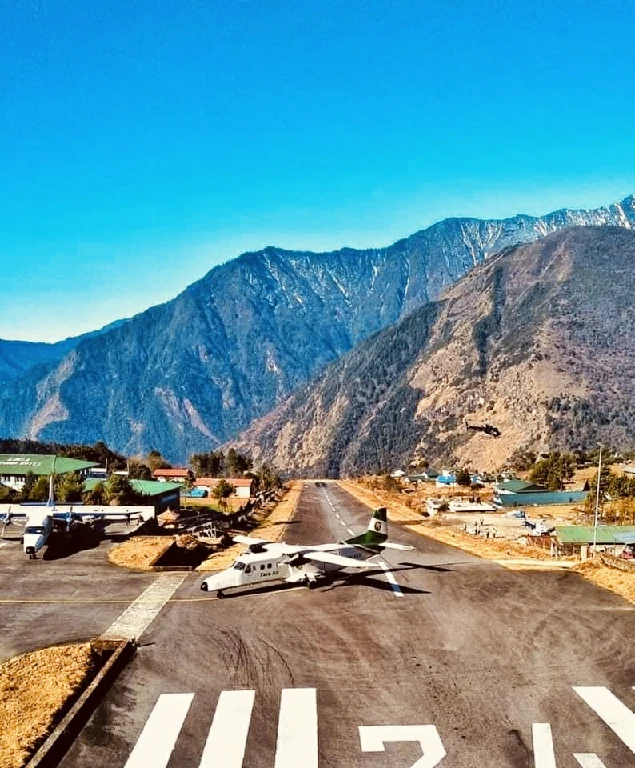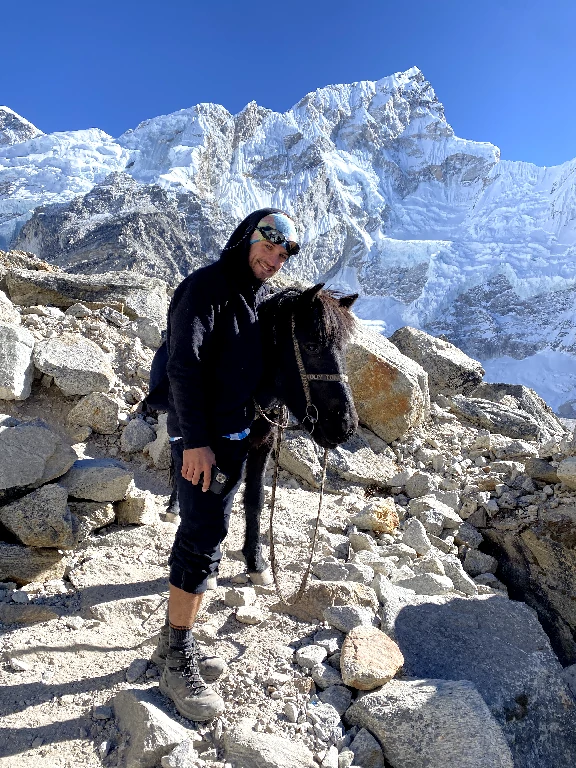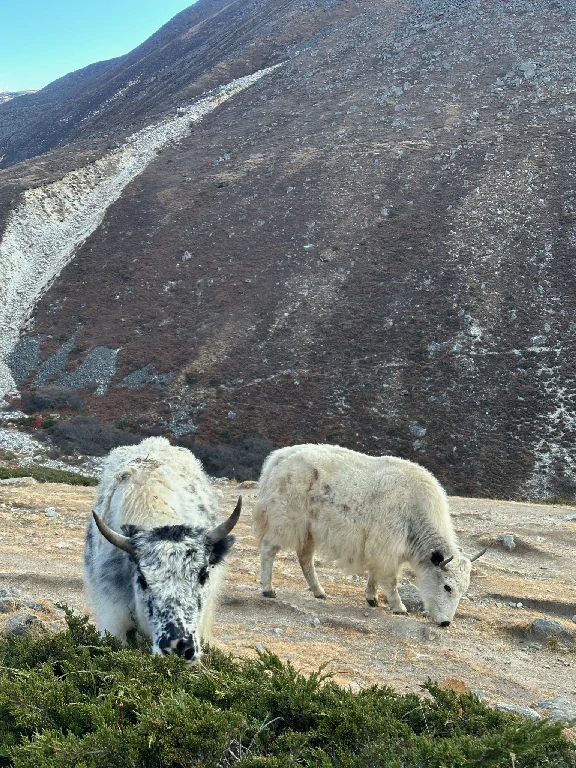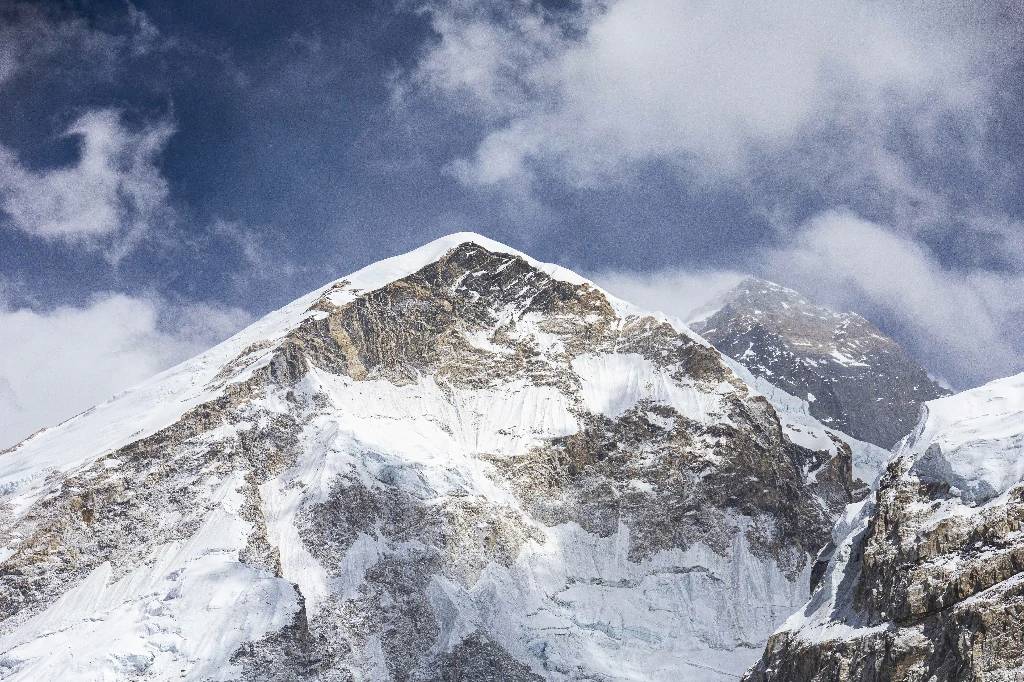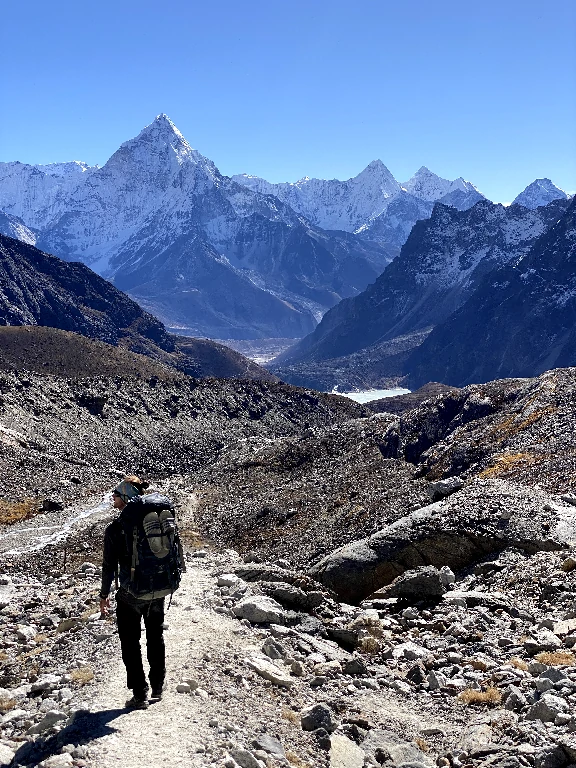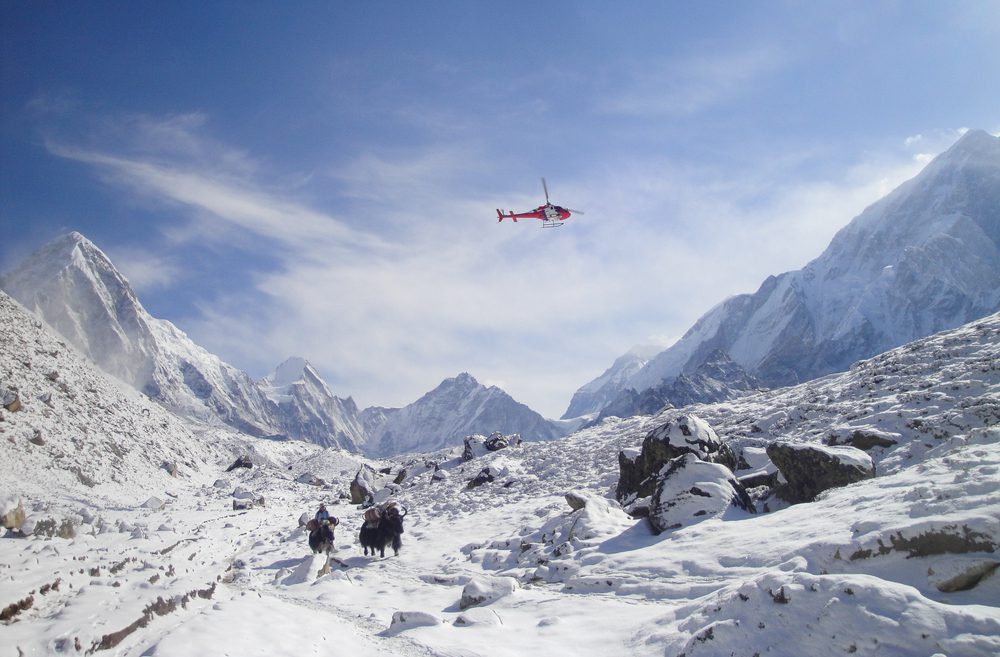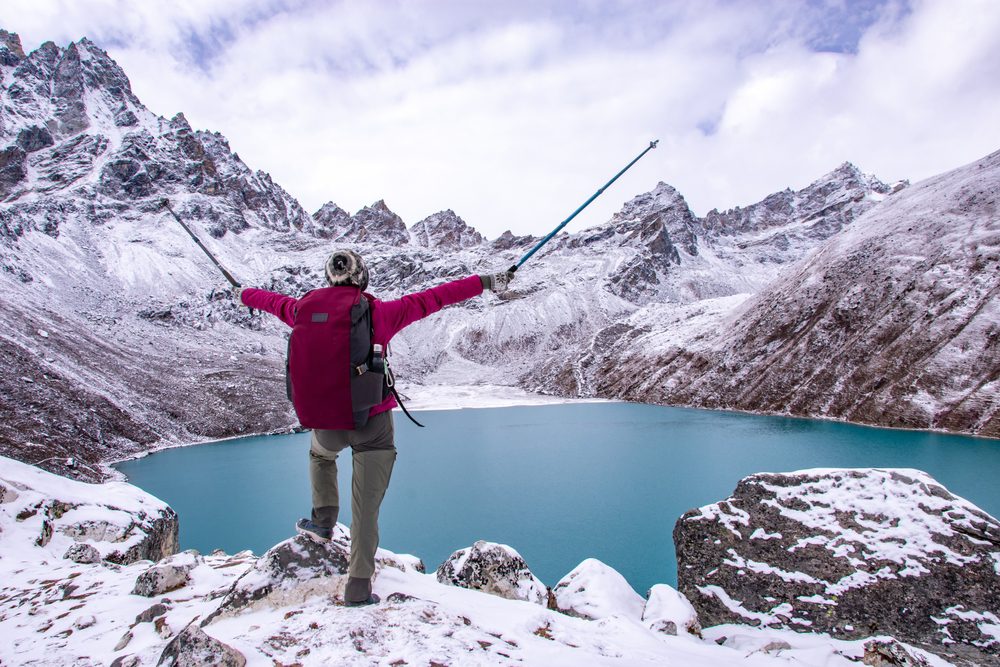Everest Base Camp 14 Days
5(18)
Trip Facts
Overview for 14 Days Everest Base Camp
Have you ever imagined the awe of being at the base of Mount Everest, surrounded by towering peaks? Well, that dream doesn’t have to stay just a dream anymore. The legendary 14-day trek takes you to the world’s highest peak, from your first step in Kathmandu to your victorious moment at Everest Base Camp.
The 14-day Everest Base Camp trek is a trekking path that passes right through the heart of Sherpa culture. It leads you through diverse landscapes and exciting mountain terrain. The trekking journey provides a breathtaking view of Everest and the surrounding Himalayan peaks, which makes the trek an immortal experience for a trekker.
The 14-day Everest Base Camp gets you to the top of the experience at an altitude of 5,364 meters (17,598 feet) and ensures that you take away a huge sense of achievement, making it all worthwhile.
Your journey to the EBC trek starts with a stunning flight from Kathmandu to Lukla, the gateway to the Everest region. The flight offers wonderful aerial views of the mountains. From there, the route goes through charming villages, dense rhododendron forests, and Sherpa villages like Phakding and Namche Bazaar. As you further go ahead, you’ll visit Tengboche Monastery, a spiritual center.
Moving further to Dingboche and Lobuche, the terrain becomes more and more similar to a high altitude plane. The major attractions of the trek include reaching Everest Base Camp and climbing Kala Patthar (5,644 m) to get the most beautiful view of the sunrise over Mount Everest.
The 14 days Everest Base Camp package is especially for adventure seekers and offers the perfect balance of challenges and achievements. Despite the fact that the trek presents various physical challenges and demands strong willpower, it is possible to do it if one is fairly fit and has been adequately trained.
You will find yourself in the culture and connect with the Sherpa people and learn their way of life by exploring several ancient monasteries and temples rich in cultural significance. Because of the pleasant weather and the clear sky with beautiful landscape scenery, spring (March to May) and fall (September to November) are the ideal seasons for the EBC tour.
If you have ever wanted to fulfill your dream, or if you are looking for a challenge, then the Everest Base Camp trek is one of the most amazing trips that will stay in your heart for the rest of your life.
This trek is more than just reaching a destination, it’s about becoming part of the Himalayas, finding out what’s inside you, and standing in awe of the world’s biggest peak. If you’re ready for an unforgettable journey, the Everest Base Camp 14 days trek is for you!
Everest Base Camp Trek Highlights
- Enjoy a thrilling mountain flight with panoramic views of the Himalayas.
- Traverse some of the highest and longest suspension bridges in the region.
- Discover Namche Bazaar, the vibrant Sherpa town and gateway to Everest.
- Visit Tengboche Monastery, one of the oldest and most spiritual monasteries in the Khumbu region.
- Stand at the foot of the world’s tallest mountain and witness the mighty Khumbu Glacier.
- Witness the most breathtaking sunrise over Everest and the Himalayan range in Kala Patthar.
- Immerse yourself in the warmth, traditions, and hospitality of the Sherpa people.
- Trek through diverse landscapes, home to unique Himalayan flora and fauna.
- Witness the dramatic beauty of one of the world’s deepest and most treacherous glaciers, Khumbu Glacier and Icefall.
- Create lifelong memories of standing in the shadow of Mount Everest and conquering Kala Patthar.
13 Nights 14 Days EBC Trek Itinerary
Your Journey, Step by Step
Flight from Kathmandu to Lukla airport (2,846 m/9,337 ft) and trek to Phakding (2,610 m/8,563 ft)
With an early morning flight to Lukla, a thrilling 35-minute journey offering stunning views of the Himalayas. Once you reach Lukla, you’ll be introduced to your team and guide, who will support you during the trek. You will begin your trek through the charming Dudh Koshi River, passing through lush valleys and small settlements. Keep your eyes peeled for Khumbila Peak, which is considered sacred by the Sherpa people. After a 3-4 hour trek, you’ll reach Phakding(2,610 m), a charming village nestled in the Dudh Koshi Valley.
You can spend your evening exploring the village or relaxing at a local teahouse.
Overnight in Phakding!
Trek to Namche Bazaar(3,440 m/11,290 ft) from Phakding
Today’s trek is challenging but rewarding. This trek takes you to Namche Bazaar(3,440 m), the bustling Sherpa capital of the Everest region. The trail crosses several suspension bridges, including the famous Hillary Bridge, and winds through pine forests and alongside the Dudh Koshi River. After entering Sagarmatha National Park, the route ascends sharply, leading you to Namche. Along the way, you’ll catch your first glimpse of Mount Everest from Tope Danda, a vantage point that will leave you in awe. Namche Bazaar is a vibrant town with shops, cafes, and bakeries, offering a perfect blend of modern amenities and traditional Sherpa culture.
Acclimatization in Namche Bazaar; hike to Syangboche Airstrip (3,748 m/12,297 ft) and Everest View Hotel (3,962 m/13,000 ft)
As acclimatization is crucial at high altitudes, day three of the EBC Trek is a rest day dedicated to helping your body adjust. Start your day by hiking to Syangboche Airstrip (3,748 m/12,297 ft), a convenient gateway for avid explorers heading toward high-altitude Khumbu destinations. Then continue to the Everest View Hotel(3,962 m/13,000 ft), one of the highest-altitude hotels in the world. From here, enjoy breathtaking views of Everest, Ama Dablam(6812m / 22,349ft), Lhotse, and Thamserku.
On your way back, stop at the Sherpa Culture Museum to discover more about the Sherpa people’s rich history and customs. In the middle of Namche Bazaar, the main trade hub of the Everest Region, you could then explore the busy local market or relax at a cafe. Along with various lodging options, such as hotels and guesthouses, you can also find handcrafted crafts and hiking equipment here.
Overnight in Namche Bazaar!
Trek from Namche Bazaar to Tengboche Monastery (3,860 m/12,660 ft)
Starting the day with an early breakfast, we will head towards Tengboche. Constructed in 1916, Tengboche Monastery is the biggest monastery in the area. Prayer flags, mani walls (walls adorned with Buddhist prayers), and mountains like Ama Dablam, Everest, Lhotse, Nuptse (7855m), and Tawoche (6501m) are all part of the hiking path to Tengboche. This trail initially crosses the Dudh Koshi River, and a further climb leads to the Tengboche monastery at 3,860 meters (12,600 ft) altitude. The sunset view of Ama Dablam from the monastery grounds is simply unforgettable.
Also, don’t miss to witness the evening prayers in the monastery, where the hypnotic chants of Buddhist monks fill the air.
Trek from Tengboche to Dingboche (4,410 m/14,470 ft)
Today’s trek takes you through the Imja Valley, passing through Pangboche, the highest permanent settlement in the region. The trail offers stunning views of Ama Dablam and Island Peak. As you ascend, the landscape becomes more rugged, and the air thinner. Upon reaching Dingboche, a picturesque village surrounded by towering peaks, you can take some time to rest and acclimatize.
Trek Duration: 5-6 hours (11km)
Overnight in Dingboche!
Acclimatization in Dingboche; Hike to Nagarjuna Hill (5,100 m/16,732 ft)
The seventh day of the Everest Base Camp Trek is dedicated to acclimatization at Dingboche. Hiking higher and sleeping lower is the most effective approach. So, we use this day by hiking to Nagarjuna Hill (5,100 m/16,732 ft) to acclimate. This challenging but rewarding climb offers 360-degree views of Mt. Makalu (8,463m), Lhotse (8,516m), Ama Dablam (6812m), and the Imja Glacier(5,100 m). After the acclimatization hike, you can relax in Dingboche to prepare for challenging days ahead or explore the village, known for its terraced fields and traditional Sherpa homes.
Overnight in Dingboche!
Trek from Dingboche to Lobuche (4,940 m/16,210 ft)
After a two-night stay in Dingboche, we move forward on our trek to Lobuche. The air gets noticeably thinner as you climb towards Lobuche. Lobuche is a small village located near Mount Everest in Nepal’s Khumbu region at 4940 meters altitude. You will pass through Thukla(4620m), where climbers who lost their lives on Everest are remembered with a moving array of monuments. The trail follows the Khumbu Glacier moraine, offering stunning views of Pumori and Nuptse. The stunning scenery will fuel our motivation until we finally reach Lobuche(4,940 m/16,210 ft).
Overnight in Lobuche!
Trek from Lobuche to Everest Base Camp (5,364 m/17,598 ft) via Gorak Shep (5,164 m/16,942 ft) and back to Gorak Shep for a night’s stay
The big day arrives! We leave Lobuche after breakfast and go via Gorak shep to EBC. The trek initially leads us over stones and uneven terrain to the little community of Gorakshep(5,164 m/16,942 ft). We depart for Everest Base Camp(5,364 m/17,598 ft), the highest base camp on Earth, following lunch at Gorakshep. The trek to Everest Base is a strenuous ascent that goes across the Khumbu glacier’s moraine. Reaching Base Camp is an emotional moment – you’re standing at the foot of the world’s highest peak.
This trip offers an amazing view of Mount Everest, Mount Mahalangur, Mount Lingtern, Mount Khumbutse, Mount Nuptse, and other mountains. This trek is going to be the most important part of the whole EBC trek.
After spending time at the base of the world’s highest peak, return to Gorak Shep for the night.
Trek Duration: 7-8 hours (12km)
Overnight in Gorak Shep!
Hike to Kala Patthar (5,644 m/18,519 ft) early in the morning and trek down to Pheriche (4,371 m/14,340 ft)
Start early for a sunrise hike to Kala Patthar, the highest point of your trek, which offers the most spectacular view of Everest’s summit. From here, watch the sunrise paint the mountains in golden hues – a moment you’ll never forget. Here, you can also see the best views of Mt. Everest, Mt. Pumori, Mt. Nuptse, Mt. Lhotse, Mt. Ama Dablam, and many more. After capturing the moment, descend to Gorak Shep and continue trekking down to Pheriche(4,371 m/14,340 ft), a peaceful village surrounded by mountains.
Trek Duration: 6-7 hours (12km)
Overnight in Pheriche!
Trek from Pheriche to Namche Bazaar (3,440 m/11,290 ft)
On the eleventh day of the Everest Base Camp trek, you can now enjoy the relatively easier descent back to Namche. You will pass through Tengboche and Pangboche with the constant company of Ama Dablam. Reach Namche Bazaar by late afternoon, where you can celebrate with fellow trekkers at one of the many cafes.
Overnight in Namche Bazaar!
Trek Namche Bazaar to Lukla (2,846 m/9,337 ft)
The very last day of the trek takes you back to Lukla. We begin our trek with breakfast. The trail to Lukla is mostly downhill, crossing the Hillary Bridge one last time. You can take moments to appreciate the lush forests and rushing rivers – scenes that will soon become cherished memories. Tonight will be your final evening in the mountains. Make sure to share your experience with your team.
Overnight in Lukla!
Morning flight back to Kathmandu (1,400 m/4,600 ft (from Lukla airport & farewell dinner in the late evening
Take an early morning flight back to Kathmandu. The 35-minute journey offers a final glimpse of the mountains you’ve come to know so well. Upon landing in Kathmandu, we will be welcomed by our representatives, who will take us to our hotels where we can relax.
Kathmandu is a city steeped in history, culture, and spirituality. So you can explore the city’s treasures, historical temples, and museums or simply go shopping in Thamel or Ason.
In the evening, join a farewell dinner to celebrate your achievement with traditional Nepali cuisine and cultural performances.
Overnight in Kathmandu!
Final departure
As your Himalayan adventure concludes, our team will ensure your smooth transfer to the Tribhuwan International Airport. You’ll leave Nepal with incredible memories, photographs, and perhaps a strong desire to return to these magnificent mountains.
Customize this trip with help from our local travel specialist that matches your Interests.
Customize This TripInclusions
What’s Covered in Your Adventure
- Private car transportation to and from the airport.
- Two nights in Kathmandu at a standard hotel, including breakfast for two.
- Three meals a day will be served to you: breakfast, lunch, and dinner.
- Trekking Lodges (Tea Houses) will be available to you along the trek.
- All necessary paperwork and admission fees to Khumbu Pasang Lhamu Rural Municipality and Sagarmatha National Park will be managed.
- Full-service package is available, including flights, airport transfers, and taxes for Kathmandu-Lukla or Ramechhap-Lukla, with everything handled for you.
- A very skilled, helpful, informed, friendly, English-speaking guide who is fully compensated, with food, beverages, hotel, transportation, and insurance covered.
- You will be provided with powerful and helpful Sherpa porters who have access to the proper trekking and safety equipment, as well as money, food, housing, and insurance. (Two people, one porter). Arrangement for an emergency helicopter service (funded by your travel insurance provider). If you do not have your own sleeping bag, down jacket, or duffel bag, you can rent them.
- The trip's completion certificate. Oximeter to check your pulse, oxygen saturation, and heart rate twice a day (very helpful to check for signs of Altitude Mountain Sickness, or AMS).Regardless of your level of experience, this will guarantee that your adventure is in the best hands.
- The meals you will have for lunch and dinner in Kathmandu.
- The price of a Nepalese visa when you enter Nepal. Your health insurance and travel insurance.
- Travel expenses and your individual costs.
- All of the cold and hot beverages, both alcoholic and non-alcoholic, that you purchase during your trip (both on the trail and at the Tea Houses at night).
- Every sweet treat, including cake, pie, pudding, and chocolate.
- Charging your phone and taking a hot shower at the tea houses, which cost between two and five dollars.
- Praise to the driver, porter, and guide. (Tipping is expected.)
- Over 15 kilograms of additional luggage for the trip to Lukla.
Everest Base Camp Trek Map
Navigate Your Journey
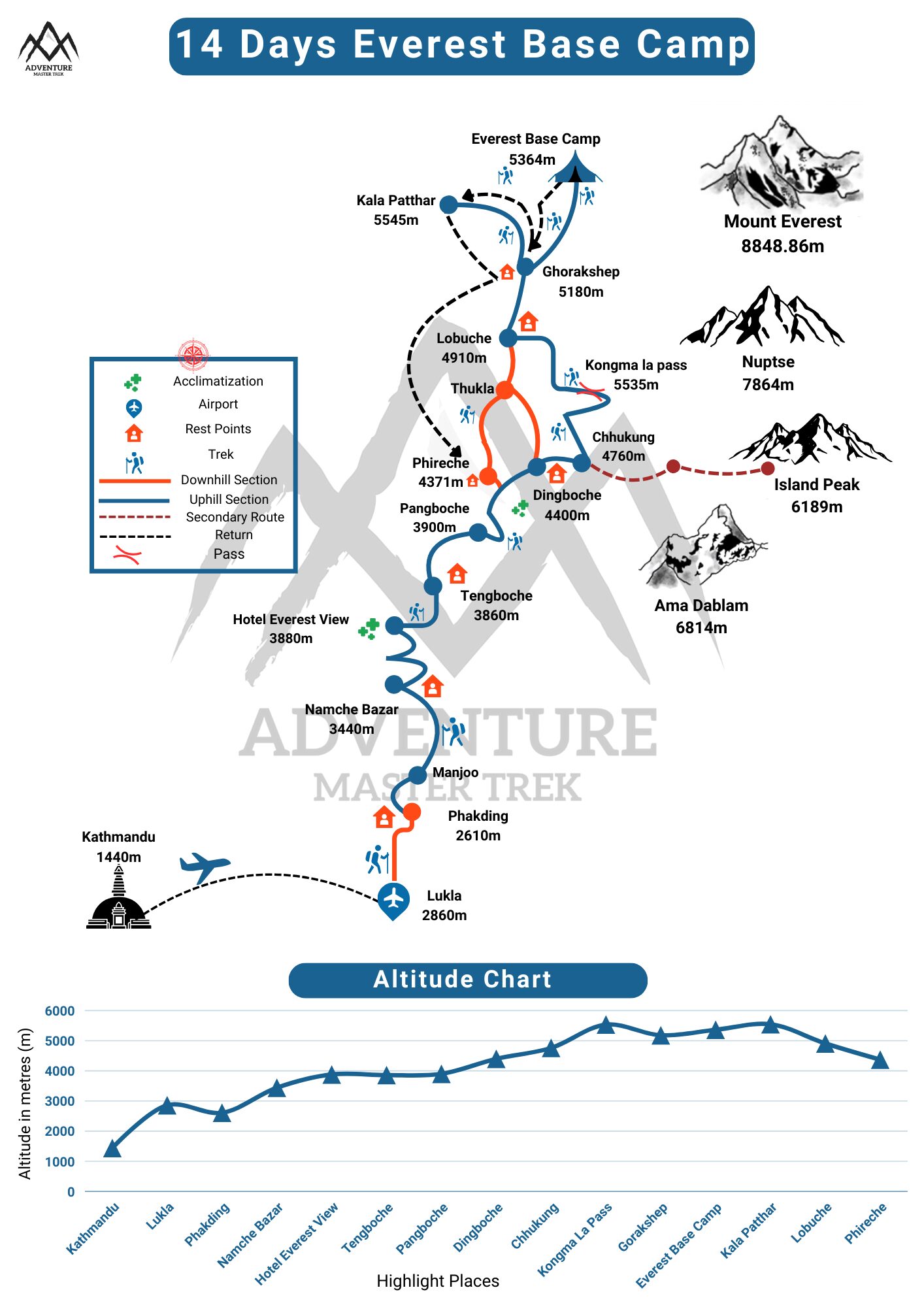
Good to Know
Know About EBC before You Go
Important Note
Every foreign citizen except the citizen of India will require a visa to enter Nepal. If you are
interested to trek on Nepal then you will have to go through the following process to get the tourist
visa of Nepal.
Accommodation and Food on Everest Base Camp Trek
The primary form of accommodation on the EBC trek is teahouses. These basic lodges provide a bed, blanket, and shared bathroom facilities. Rooms are usually twin-sharing with minimal furniture.
Teahouses are relatively inexpensive, costing around 5–10 USD per night in lower altitudes and 10–20 USD at higher altitudes (e.g., Gorak Shep or Lobuche).
Lower-altitude teahouses (e.g., Lukla, Namche Bazaar) may have attached bathrooms and hot showers, whereas higher-altitude teahouses have shared bathrooms and cold showers (hot showers may cost extra).
During peak seasons (spring and autumn), it’s advisable to book in advance, especially at popular stops like Namche Bazaar.
It’s recommended to bring a sleeping bag for extra warmth, as teahouse blankets may not be sufficient at higher altitudes.
For food, teahouses serve various meals, including Nepali, Tibetan, Indian, and Western dishes. Usually, they offer pancakes, porridge, and eggs for breakfast.
Common options for lunch and dinner include Dal Bhat (rice, lentils, and vegetables), noodles, pasta, soups, momos (dumplings), fried rice, and potatoes. Snacks like chocolate bars, biscuits, and chips are also available.
Meals cost between 5–10 USD per dish, increasing prices as you gain altitude due to transportation costs.
Recommendation: Stick to cooked meals and avoid raw or uncooked foods to reduce the risk of foodborne illnesses.
Drinking Water
Staying hydrated is crucial during the trek, as dehydration can contribute to Acute Mountain Sickness (AMS). It’s recommended to drink at least 3–4 liters of fluids daily.
However, we advise against purchasing bottled water, as it contributes to the growing waste problem in the mountains and is expensive, with prices rising as you ascend.
Bottled water is available at teahouses, but it’s expensive. It’s also not environmentally friendly due to plastic waste. So you can also have boiled water, which is easily available in teahouses that are eco-friendly too.
The most cost-effective and sustainable option is to bring water purification tablets, a SteriPEN, or a portable water filter. You can fill your bottle from streams or taps and purify it yourself.
Electricity and Internet Connectivity
Electricity is available in most teahouses, but supply can be intermittent, especially at higher altitudes where solar power is the main source. Charging electronic devices such as phones and cameras comes at a cost, as power outlets are often limited to common areas.
Bringing a portable power bank is highly recommended to ensure your devices stay charged during long trekking days.
Despite being one of the highest trekking routes in the world, the 14 Days Everest Base Camp (EBC) trek offers internet access, though connectivity can be inconsistent in some areas.
Most teahouses along the trail up to Gorak Shep provide Wi-Fi for an additional fee, so you have to pay a few dollars.
Altitude Sickness & Acclimatization on the Everest Base Camp (EBC) Trek
Altitude sickness, also known as Acute Mountain Sickness (AMS), is a significant concern for trekkers heading to Everest Base Camp (EBC), as the trail ascends from Lukla at 2,860m to EBC at 5,364m.
The condition occurs when your body struggles to adapt to lower oxygen levels at high altitudes, potentially causing symptoms like headaches, nausea, dizziness, and shortness of breath.
But don’t worry; we have professional guides who will assist you throughout the trek. Additionally, Lukla, Namche, and Pheriche have clinics that provide basic medical care for mild illnesses.
Proper acclimatization is crucial for a safe trek to EBC and typically involves a carefully planned ascent with rest days built into the itinerary. Also, our journey includes two days of acclimatization, one at Namche Bazaar ( 3,440 m) and the other at Dingboche (4,410 m).
During these rest days, it’s recommended to take short hikes to higher elevations and return to sleep at lower altitudes, helping your body adjust to the increasing altitude gradually.
How to prevent Altitude sickness?
Preventing altitude sickness while trekking to Everest Base Camp requires careful acclimatization, proper hydration, and adequate preparation. Altitude sickness, also known as Acute Mountain Sickness (AMS), occurs when your body struggles to adapt to the lower oxygen levels at high elevations.
If left untreated, it can result in serious problems. Therefore, for a successful and pleasurable hike, it is crucial to take safety measures.
One of the most effective ways to prevent altitude sickness is acclimatization. As mentioned above, acclimatization is highly recommended to limit your ascent to no more than 500 meters per day above 3,000 meters.
Hydration and nutrition play a crucial role in altitude adaptation. Drinking at least 3-4 liters of water per day helps prevent dehydration, which can worsen altitude sickness symptoms. Remember to avoid alcohol.
For those prone to AMS, medications like Acetazolamide (Diamox) can be used as a preventive measure. This drug helps the body acclimatize by increasing the breathing rate and improving oxygen absorption.
It is generally taken at a dose of 125–250 mg twice daily, but a doctor’s consultation is necessary before use. Pain relievers such as Ibuprofen or Paracetamol can help alleviate mild AMS symptoms like headaches. You can maintain a slow and steady trekking pace is vital to avoid overexertion.
In conclusion, you may greatly lower your risk of altitude sickness by taking these precautions: a well-paced hike, gradual climb, adequate water, healthy eating, and medicine as needed.
Lukla and Ramechhap Flight Information & Weight Limit
Lukla, home to the Tenzing-Hillary Airport, is the gateway to the Everest region and the starting point for most Everest Base Camp treks. Good weather at the start and ending points is necessary for a safe flight to the airport.
So, during the peak seasons(March, April, May, October, and November), the traffic in Kathmandu airport is congested, which makes us take an alternative route to Manthali Airport in Ramechhap.
Located at about a 4-5 hour drive from Kathmandu, flights from Ramechhap to Lukla are shorter, take only 15-20 minutes, and generally have better weather conditions.
This airport has become increasingly important during high-traffic periods to help manage the flow of trekkers heading to the Everest region.
When it comes to weight limits, both Lukla and Ramechap flights have strict restrictions due to the small size of the aircraft used and the challenging flying conditions.
Generally, the weight limit for checked luggage on these flights is around 10-15 kilograms (22-33 pounds) per passenger, with an additional allowance of 5 kilograms (11 pounds) for carry-on baggage. During the trek itself, our porters typically carry 20-25 kg of your gear, therefore, this should be carefully planned and distributed. You will be charged an extra $3 for over limit of baggage.
It’s crucial to book flights well in advance, maintain a flexible schedule due to potential weather delays, and consider having essential trekking gear in hand luggage.
Safety and Security in Nepal and EBC Trek
Lukla, home to the Tenzing-Hillary Airport, is the gateway to the Everest region and the starting point for most Everest Base Camp treks.
Good weather at the start and ending points is necessary for a safe flight to the airport. So, during the peak seasons(March, April, May, October, and November), the traffic in Kathmandu airport is congested, which makes us take an alternative route to Manthali Airport in Ramechhap.
Located at about a 4-5 hour drive from Kathmandu, flights from Ramechhap to Lukla are shorter, take only 15-20 minutes, and generally have better weather conditions. This airport has become increasingly important during high-traffic periods to help manage the flow of trekkers heading to the Everest region.
When it comes to weight limits, both Lukla and Ramechap flights have strict restrictions due to the small size of the aircraft used and the challenging flying conditions. Generally, the weight limit for checked luggage on these flights is around 10-15 kilograms (22-33 pounds) per passenger, with an additional allowance of 5 kilograms (11 pounds) for carry-on baggage.
During the trek itself, our porters typically carry 20-25 kg of your gear, therefore, this should be carefully planned and distributed. You will be charged an extra $3 for over limit of baggage.
It’s crucial to book flights well in advance, maintain a flexible schedule due to potential weather delays, and consider having essential trekking gear in hand luggage.
Trekking Permits for EBC Trek
To preserve the natural beauty of Mount Everest and other Himalayan peaks, the Nepali government charges entrance permission fees. By paying these fees, the area’s unique landscape, which includes its meadows, woods, glaciers, snow-capped mountains, and cultural heritage, is preserved.
Permits are needed to enter all of Nepal’s national parks, including Sagarmatha National Park. This charge invests in protecting the region for the next generations of mountaineers, trekkers, and its native Nepali population.
Khumbu Pasang Lhamu Rural Municipality Entrance Permit and Sagarmatha National Park Entry Permit are two permits required for your Everest Base Camp trek.
1. Khumbu Pasang Lhamu Rural Municipality Entrance Permit Costs:
- For Nepalese citizens: Free
- For SAARC nation citizens: NPR 1,000 per person
- For Foreign nation citizens: NPR 2,000 (appx. $15)
- Where to Get: Lukla
2. Sagarmatha National Park Entry Permit Costs:
- For Nepalese citizens: NPR 100 per person
- For SAARC nation citizens: NPR 1,500 per person
- For Foreign nation citizens: NPR 3,000 (appx. $25)
Discount: Only for children below 10 years
Where to Get: Kathmandu or Monjo
Required documents for Everest Base Camp Permit
- A passport with at least 6 months validity.
- Two passport-sized pictures.
- Nepal entry visa (Indian citizens don’t need)
- A completed application must be sent in.
- Nepalese rupees for permit fees.
- Evidence of travel insurance (optional).
Everest Base Camp Trek Difficulty
One of the hardest treks in the Everest region is the EBC trip. To travel on the rough terrain of the Khumbu region, a trekker must be in good physical and mental health. Additionally, you should walk for six to eight hours per day on average.
To adjust to high altitude acclimatization, trekkers must be in good physical condition. Nonetheless, porters and guides are at your side in case of an emergency.
We advise you to begin regular workouts like stair climbing, biking, and running at least 4 to 6 weeks before the commencement of the journey to prepare for a high-altitude adventure like this.
EBC Trek Group Size
You will be bound to a group size of a maximum of 8 people for the Everest Base Camp (EBC) trek, which is an ideal group size for a more intimate and personalized experience.
This smaller group size allows for better flexibility in the itinerary, smoother communication with the guide, and more space at tea houses along the trek.
With fewer people, you can enjoy a quieter, more relaxed journey while still benefiting from the camaraderie of fellow trekkers. This size strikes a perfect balance between social interaction and maintaining a comfortable pace throughout the trek.
Expert Packing List for the Everest Base Camp Trek
General – The Foundation of Your Adventure
- Passport: With extra copies and passport-sized photos for permits.
- Trekking Permits: TIMS (Trekker’s Information Management System) card and Sagarmatha National Park permit.
- Cash: Nepali rupees for tips, snacks, and small purchases.
- Duffel Bag: Used for your primary luggage, which porters typically carry.
- Backpack: 30-40L for day use, with rain cover.
- Sleeping Bag: Rated to at least -15°C (5°F) for cold nights.
Upper Body – Staying Warm & Protected
- Sun Hat/Cap: For sun protection (wide-brimmed or baseball cap).
- Warm Hat: A hat with insulation for colder climates.
- Scarf/Neck Gaiter/Buff: Versatile for warmth and dust protection.
- Sunglasses: High altitude, UV-blocking sunglasses.
Torso – Layering for Success
- Technical Shirts: 2 short-sleeve and 2 long-sleeve, moisture-wicking.
- Down jacket: To stay warm on chilly mornings and evenings.
- Fleece Pullover: This provides extra warmth for layering in colder conditions.
- Waterproof/Windproof Shell Jacket: For those unpredictable weather moments.
Lower Body – Comfortable & Durable
- Base Layer: Thermal bottoms for added warmth in cold weather.
- Hiking Shorts: For warmer sections of the trek.
- Comfortable Pants: For relaxing in teahouses.
- Waterproof Pants: Shields against rain and snow.
Hands – Keeping Them Toasty
- Liner Gloves: Lightweight gloves for mild weather or layering.
- Insulated Gloves: Thick and warm gloves for freezing temperatures.
Feet – Happy Feet, Happy Trekker
- Trekking Boots: Sturdy, waterproof, and well-worn boots.
- Camp Shoes: Cozy sandals or shoes for lounging at lodges.
- Thermal Socks: At least four or five pairs made of wool or synthetic.
- Liner Socks: Optional for added comfort and blister prevention.
- Gaiters: Protects against dust or snow, depending on the season.
- Ice Cleats: For icy trails (November to March).
Undergarments – Comfort Matters
- Quick-Dry Underwear: It’s recommended to have 4-5 pairs for hygiene and comfort.
- Sports Bras: For women, moisture-wicking and supportive.
- Pajamas/Sleep Clothes: As, they are comfortable for nights in teahouses.
Medications and First Aid Box – Health First Priority
- Altitude Sickness Medications (e.g., Diamox): To help prevent or treat symptoms of altitude sickness.
- Sunscreen & Lip Balm: With high SPF for protection against UV rays.
- Bandages: For wound dressing and support, including adhesive and sterile gauze bandages.
- Pain Relievers (e.g., Ibuprofen, Paracetamol): For managing headaches, muscle pain, or any discomfort during the trek.
- Cough Syrup: For reducing coughing, especially if affected by dust, cold air, or altitude-related dryness.
- Antibacterial Cream (e.g., Neosporin): To prevent infection in cuts, blisters, or scrapes.
- Thermometer: To monitor body temperature in case of fever or chills.
Note: A complete first aid kit is usually carried by your guide, but it’s always a good idea to have your own. By keeping these necessities on hand, you can easily handle little problems and have a more enjoyable and safe journey.
Other Essentials – The Little Things That Count
- Toiletries: Biodegradable soap, toothbrush, toothpaste, and wet wipes.
- Water Bottle/Bladder: Containing water purification tablets with a minimum capacity of 2-3L.
- Towel: A hygienic, fast-drying towel for personal use.
- Toilet Paper: 2 rolls for emergencies.
- Hand Sanitizer: For hygiene on the go.
- Headlamp with Extra Batteries: Trust me, you’ll need it.
Optional – Adding Comfort and Convenience
- Snacks: Chocolate, nuts, and energy bars to keep you going while trekking.
- Down Booties: For extra warmth in the evenings.
- Dry bags: To keep valuables and devices dry.
- Notebook/Journal: To record your journey.
- Earplugs & Eye Mask: For better sleep in crowded lodges.
- Trekking Poles: Shock-absorbing, adjustable poles to reduce strain on knees during steep descents.
- Thermos: To keep hot water for tea or soup on the trail.
- Whistle: For emergencies in remote areas.
- Power Bank: For charging electronics (limited charging on the trek).
- Camera: To record the breathtaking vistas.
Visa on Arrival
Nepal provides a visa on arrival for most foreign travelers at Tribhuvan International Airport (TIA) in Kathmandu selected land border entry points. Citizens of most countries.
This includesthe USA, UK, Canada, Australia, European Union nations, India, and many more, can obtain a visa on arrival. Upon arrival, to obtain a visa on arrival, you need:
- A valid passport (at least six months validity).
- A completed visa application form (available at airport kiosks or online).
- Visa fee payment in cash (USD or other accepted currencies):
- USD 30 for 15 days (multiple entry)
- USD 50 for 30 days (multiple entry)
- USD 125 for 90 days (multiple entry)
For a faster process, it is recommended to fill out the online visa application up to 15 days before arrival via the official Nepal Immigration website.
Travel Insurance
A solid travel insurance policy that covers all of the activities and altitudes on your schedule is essential for the Everest Base Camp Trek. Your travel insurance should provide adequate coverage up to 5,644 meters, the greatest altitude you will ever reach.
Even though your safety is our top priority, accidents and emergencies at this height are nevertheless possible. There is less oxygen in the air, and hikers frequently get acute mountain sickness, which can be lethal if left untreated.
Walking in a dangerous mountainous area puts you at risk for physical harm as well. As a result, be confident your insurance will pay for any accidents or emergencies that may arise during this trekking trip.
Also, your insurance coverage should specifically cover the expense of hospitalization and helicopter evacuation, as both can be highly costly.
Everest Base Camp Trek Cancellation Policy
We recognize that unexpected events may lead to trip cancellations. Our Everest Base Camp Trek cancellation policy is as follows:
1. Cancellation by the Guest
- 30 days before departure: Complete reimbursement With the exception of the bank transfer fee.
- 10 days before departure: 30% of the entire trip cost is refunded.
- Five days or less before departure: There will be a 50% refund.
- There won’t be any additional fees or postponed costs if you have to cancel your trip at the last minute.
- After the trek begins: No refund will be made for any reason (e.g., personal illness, injury, or early return).
2. Cancellation by the Company
You have the following options if the trek is canceled due to unanticipated events, natural disasters, or political unrest:
- Get a complete reimbursement of the trip price.
- Reschedule your trek to a later date.
3. Cancellation Due to Weather or Flight Delays
If your Lukla flight is canceled or delayed due to bad weather:
- At no additional expense, we will attempt to reschedule your trek. Your trekking area will be changed as needed.
- A complete refund of 30% of your trip cost will be given if you choose to cancel, except service fees for permits, hotel reservations, and transportation.
4. No-Show Policy
- No refund will be given if a guest does not arrive on their scheduled departure date without notice.
5. Travel Insurance Requirement
- Comprehensive travel insurance that covers evacuation expenses, medical crises, and trip cancellations is highly recommended.
Booking Policy of Everest Base Camp Trek
We aim to make the booking process smooth and flexible for our guests. Below are the details of our Everest Base Camp Trek booking policy:
1.Advance Payment & Booking Confirmation
To secure your reservation, a 30% down payment of the entire trip fee is needed.
- The remaining balance can be paid upon arrival in Kathmandu before the trek begins.
- You can also decide to pay the whole price in advance.
To proceed with the booking, you need to send:
- The booking amount
- A soft copy of your passport
- Additional required details (e.g., emergency contact, travel insurance details, etc.).
2.Payment Methods
For your convenience, we provide a variety of payment methods:
- Online Payment: Use the payment gateway on our website to make a secure online payment.
- Credit/Debit Cards: We accept Visa, MasterCard, and more (4% bank service charge applies).
- Bank/Wire Transfers: Send money straight to our bank account. (Transaction fee applicable)
- Cash or Cheque: You have the option of paying with cash or a cheque if you are in Kathmandu.
3.Final Payment
- The remaining 70% of the trip cost must be paid before departure.
- Payment can be made in cash, card, or bank transfer upon arrival.
4.Booking Modifications & Rescheduling
- If you need to change your trek date, please inform us at least 30 days in advance.
- Depending on the circumstances, date adjustments may be based on availability and additional fees.
5.Travel Insurance Requirement
- Every trekker needs to have full-coverage travel insurance that covers medical situations at high altitudes, evacuation, trip delays, and cancellations.
6.Last-Minute Booking
- Bookings made at the last minute (up to 48 hours prior to departure) are accepted, but availability is not assured.
Everest Base Camp Trek FAQs
Your Questions, Answered
Should I tip a guide or porter?
Yes, 10% of the total trip cost is suggested for guides and porters to EBC. But you can tip higher if you want.
Where can I exchange money in Nepal?
There are currency exchange counters in the Tribhuvan International Airport arrivals area that are open twenty-four hours a day. Alternatively, you can exchange money at approved exchange locations close to your accommodation. These locations are usually open all day.
How difficult is the EBC trek?
Among the Everest Region’s most difficult hikes is the EBC trip. To travel on the rough terrain of the Khumbu region, a trekker must be in good physical and mental health. Additionally, you should walk for six to eight hours per day on average.
Trekkers must be in good physical condition in order to acclimate to high altitude. However, porters and guides are at your side in case of an emergency.
We advise you to begin regular workouts like stair climbing, biking, and running at least 4-6 weeks before the beginning of the journey to prepare for a high-altitude adventure like this.
What kind of toilet facilities can you expect on the Everest Trek?
Toilets and bathrooms are shared, with either a Western-style toilet or a squat style. Please remember always to have toilet paper rolls on hand. When trekking, it’s crucial to have enough rolls of toilet paper and hand sanitizer with you.
Is it risky to fly into Lukla Airport?
The airport at Lukla is regarded as unsafe. However, during the tourist season, there are over 20 planes daily, which is reasonably safe. An alternative to flying to Lukla is to begin the trip from Jiri, which will take an additional five to six days.
Which is the best route that takes you to the base camp on Mount Everest?
Depending on the trekkers’ interests, there are different routes to Everest Base Camp. The following are the most well-liked:
- Gokyo Lake and Everest Base Camp
- EBC via Jiri
- EBC with three high passes
- Kongma La 5,535 meters
- Cho La 5,380 meters
- La Renjo 5,388 m
What is the best time to trek to Everest Base Camp?
The best times for EBC trek are pre-monsoon (March to May) and post-monsoon (September to November).
Can I take a helicopter flight to Lukla?
Yes, you can take a helicopter flight to Lukla. That will cost an additional $600 USD per person if you want to take helicopters or if the weather is bad.
Can I trek EBC trek without trekking experience?
Yes, you go to Everest Base without experience if you are healthy and positive towards the trip.
To prepare yourself, you need to regularly exercise 4-6 weeks before to train your body.
Can I use my card for payment in Nepal?
Yes, card payment is available in Nepal. You can use them, especially in major cities like Kathmandu and Pokhara. Many hotels and restaurants also accept card payments.
But please remember they come with a certain fee. So I suggest you take Nepalese rupee instead of card payment during the trek.
Are there any ATMs on the EBC trek?
Yes, you can get an ATM in Namche Bazaar. However, they are not always reliable due to frequent power cuts, machine malfunctions, or cash shortages. So it is recommended to bring enough cash with you for the trek.
Do I need to book in advance?
It’s recommended to book permits, flights, and guides in advance, especially during peak seasons, for a smoother Everest Base Camp trek.
Can I rent sleeping bags and down jackets?
Yes, you can rent sleeping bags and down jackets in Kathmandu or at the starting point of the trek (Lukla or Namche Bazaar).
Is it okay not to have travel insurance?
No, you need travel insurance that ensures you have a safe and peaceful journey to the EBC trek. Travel insurance will help you in any emergency conditions that may occur during the trek.
Is there a faster route to Everest Base Camp?
Yes, you can reach the camp in just 4-5 hours by EBC helicopter tour.
Can I travel without a permit to EBC?
No, you cannot travel to Everest Base Camp without the required permits; you will require two permits for entrance to the Everest region and Sagarmatha National Park.
Can I get vegetarian food?
Yes, you can easily find vegetarian food during the EBC trek, with most teahouses offering various vegetarian options like dal bhat, noodles, pasta, and vegetable curries.
What are the age limitations for the Everest Base Camp trek?
There is no strict age limit for the Everest Base Camp trek, but it’s recommended that the trekkers be between the ages of 12 to 70 years old with a good fitness level.
Do I need to bring my own first aid kit for the EBC trek?
It is advised to have your own first aid kit with basic necessities like bandages, pain relievers, and altitude sickness medications, even though your guide will usually have a fully equipped kit.
Do I need to get vaccinations before the trek?
You can consult your doctor, but Hepatitis A, Typhoid, and Tetanus are commonly recommended.
Is it safe for solo female trekkers?
Yes, Nepal is safe for solo female travelers. You can come and trek in the EBC Nepal trek with a guide or group for convenience.
What happens in case of an emergency?
In case of an emergency, our expert guides will handle the situation calmly and, if needed, arrange for a swift helicopter evacuation to ensure your safety.
View Our Similar Packages
Discover our top tours, loved by thousands of travelers annually. Choose the adventure that inspires you and embark on a journey tailored to your desires.









